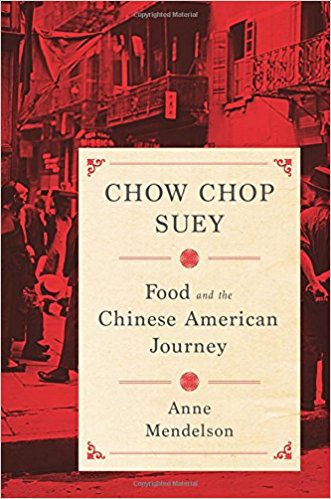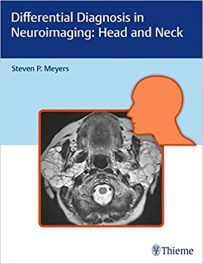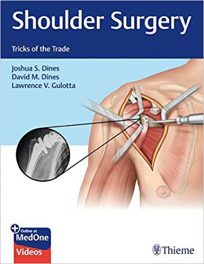 Author: Anne Mendelson
Author: Anne Mendelson
Publisher: Columbia University Press – 330 pages
Book Review by: Laxmi Chaandi
The 2010 United States Census showed that there were 3.3 million people of Chinese origin and birth in the United States, comprising about one percent of the total population.
It was in the early nineteenth century that the Chinese first came to the United States. They worked on the transcontinental railroad, as well as in the mining industry. While industrial employers were eager to get this new and cheap labor, the Chinese were initially subject to racial discrimination by the broad public. This persisted for decades.
Later in the century, so hostile was the opposition to the Chinese that in 1882 the United States Congress eventually passed the Chinese Exclusion Act, which prohibited immigration from China for the next ten years, and banned Chinese already here, from becoming naturalized as U.S. citizens. This law was extended by the Geary Act in 1892.
During the California Gold Rush (1848-1955) some 300,000 people from all over the United and overseas came to the state. These included people from China, as well as from Australia, Europe, and Latin America.
In 1924 the law barred further entries of Chinese. Also, all Asians (except people from the Philippines, which had been annexed by the United States in 1898) were excluded by law, denied citizenship and naturalization, and prevented from marrying Caucasians or owning land.
In the 1940s after the United States and China became allies during World War II, the situation of the Chinese greatly improved.
In 1943, the Magnuson Act allowed the immigration of Chinese to the U.S., repealing 61 years of official racial discrimination against them. But large-scale Chinese migration did not occur until 20-plus years later, when the Immigration and Naturalization Act of 1965 was enacted. It also lifted all national-origin quotas.
One of the broadest and strongest influences of Chinese culture on the United States is food. This book is essentially a history of Chinese cuisine in America from the times of the Gold Rush until the Cold War. The author Anne Mendelson is a renowned ‘culinary historian’ who has written broadly on subjects relating to food.
We present to you below an overview of what you will find in this unusual history of Chinese, particularly Cantonese, cuisine:
Introduction
Prologue: A Stroke of the Pen
- Part I.
- Origins: The Toisan-California Pipeline
- The Culinary “Language” Barrier
- “Celestials” on Gold Mountain
- The Road to Chinatown
- Part II
- The Birth of Chine-American Cuisine
- Change, Interchange, and the First Successful “Translators”
- White America rediscovers Chinese Cuisine
- An Advancement of Learning
- The First Age of Race-Blind Immigration
Postscript: What Might Have Been
Notes – Glossary – Bibliography – Index
In my personal observation, for many Americans (and others) who eat Chinese food in the United States, what they are eating basically is Chinese-American food, which has a vastly different taste and flavor than Chinese food in other countries, including in Hong Kong, now a territory of China, where I have eaten with family and friends in many restaurants. They have stated flatly that Chinese-American food is not authentic Chinese food.
The author points out that Chinese-American food was developed mainly by the Cantonese people who immigrated from Guangdong providence in southern China. Another term for Chinese-American food is ‘chop suey food’ which American palates have become used to, and love to eat. She writes:
“Part I opens with a chapter describing both the important features of ‘chop suey’ cuisine as a construct deliberately tailored to non-Chinese preferences and the further changes wrought by white enthusiasts who tried (with muddled understanding) to teach other fans how to cook ‘chop suey.’ As I explain, the term originated as a garbled English rendering of ‘chow chop suey’ with ‘chow’ indicating the stir-fry method.”
A new era of upscale Chinese restaurants began during the years of World War II (when China became a U.S. ally, fighting against Japan). As an example of the beginning of this new era,, the author points out in chapter 7, White America Rediscovers Chinese Cuisine, the opening in 1947 of Peking Restaurant in Chevy Chase, Maryland, a suburb close to the Washington D.C. She writes:
“In a strategic break with earlier restaurant demographics, it was set in a residential neighborhood overflowing with wealth and prestige.” Even the name ‘Peking’ in the restaurant’s title, implicitly links it with the capital of the United States.
This book is one-of-a-kind, unusually informative one, weaving together the history of Chinese food with story of the ups and downs of Chinese immigration into the United States.
It makes for a delectable dish worth tasting and enjoying.
Author:
Anne Mendelson is an esteemed culinary historian and writer specializing in food-related subjects. A collaborator on several cookbooks and a sought-after to such major reference works as The Oxford Encyclopedia of Food and Drink in America (2004), she has held major scholarly fellowships and was the winner of the 2007 Sophie Coe Prize in food history.
She is the author of Milk: The Surprising Story of Milk Through the Ages (2007) and The Story of the Women Who Gave America “The Joy of Cooking”(1996).







